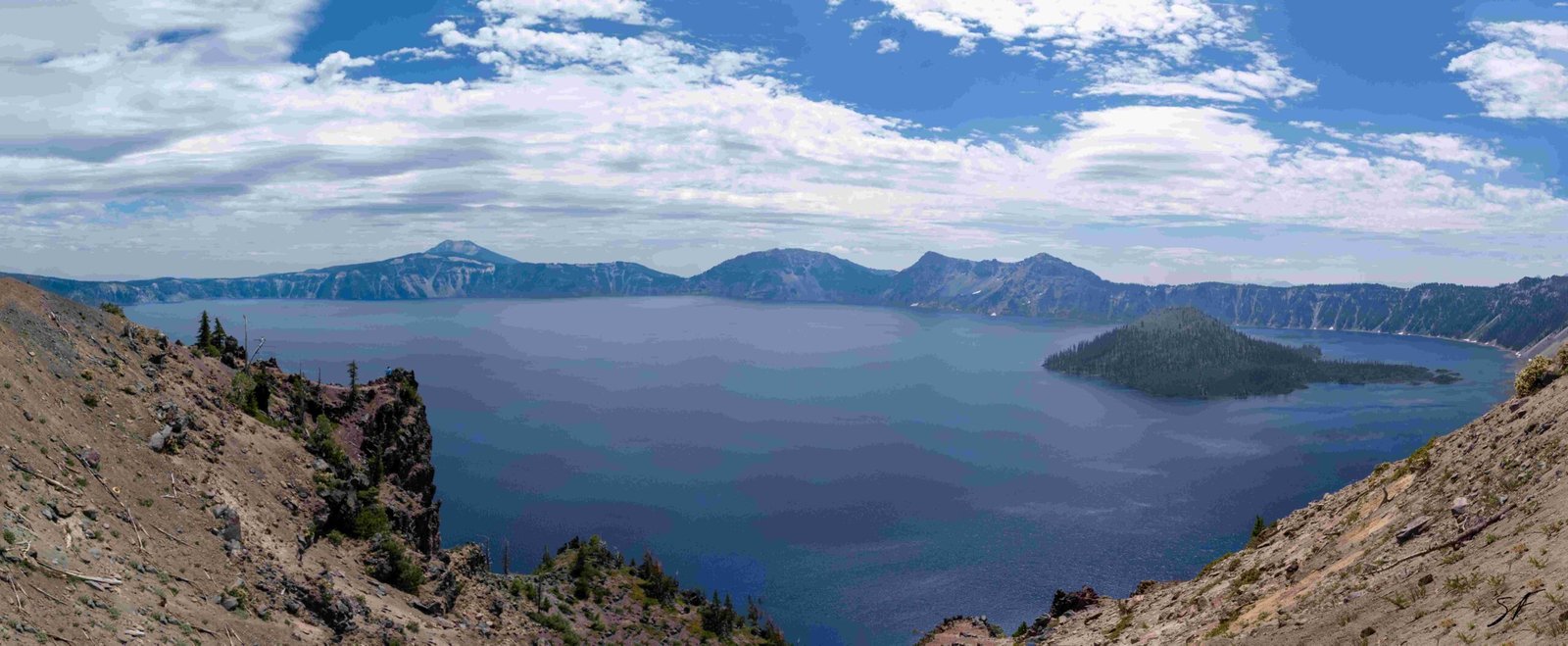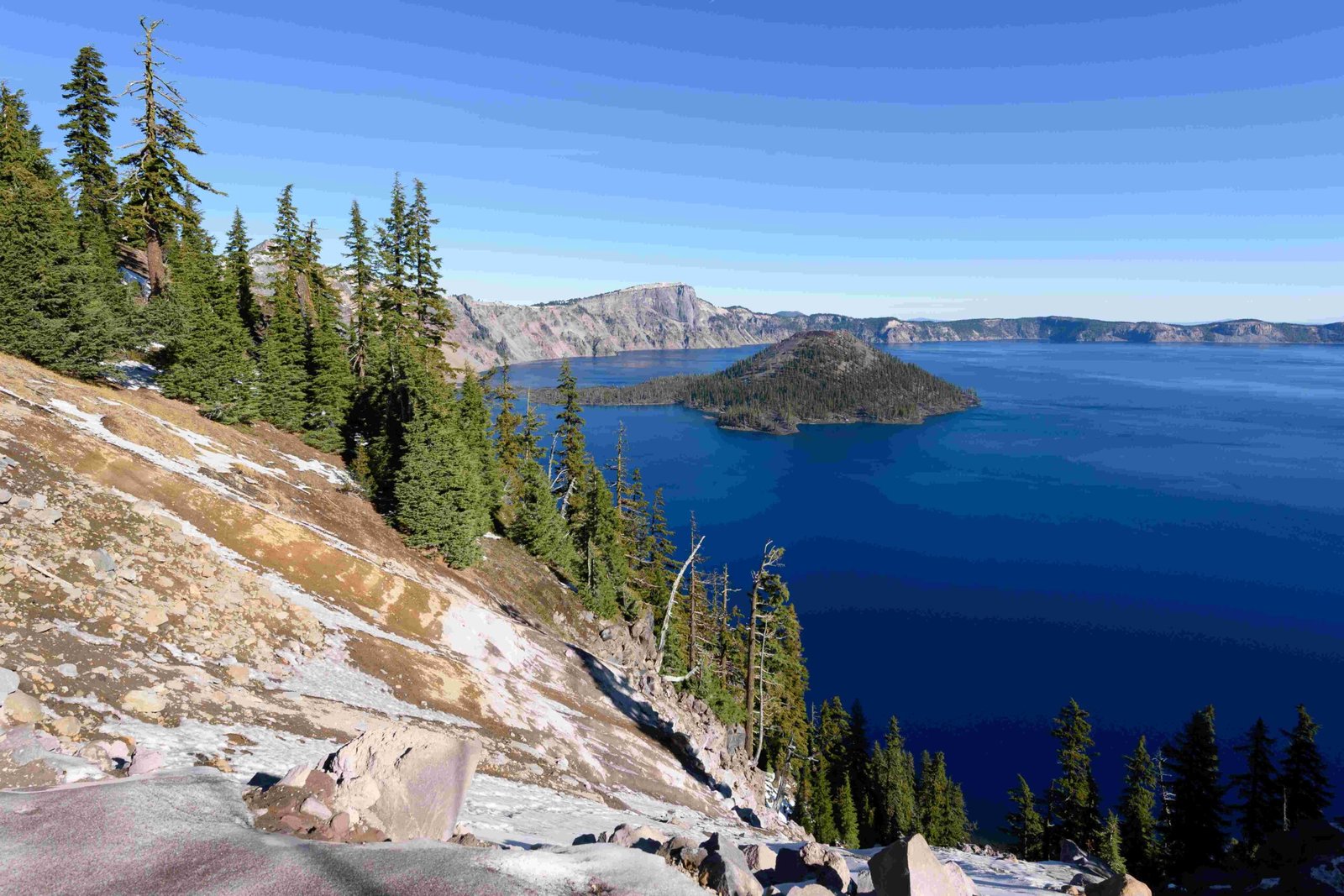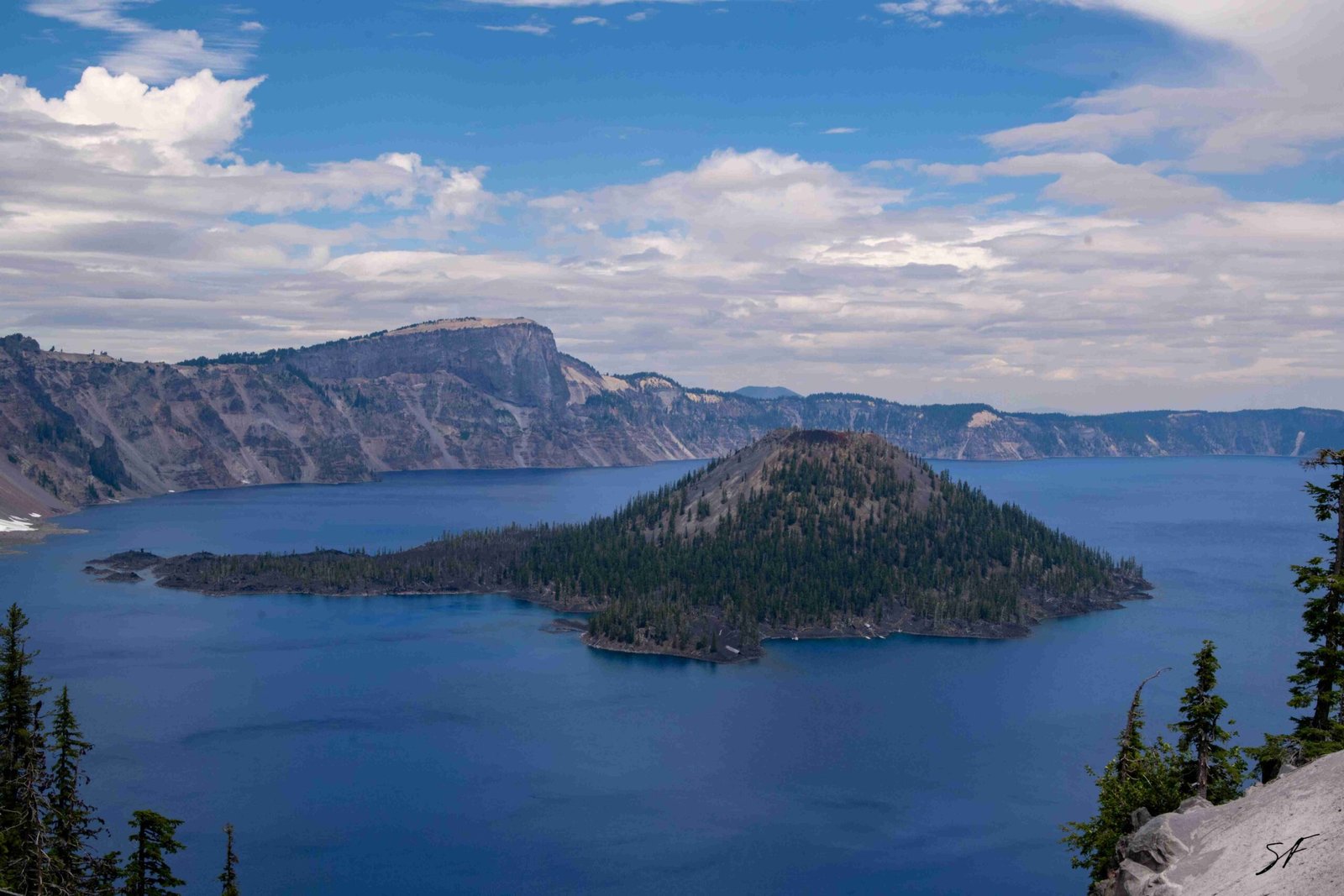Crater Lake, a natural wonder renowned for its pristine blue waters and stunning volcanic landscape, is indeed located within the Cascade Mountains in southern Oregon. This unique lake, formed by the collapse of an ancient volcano, sits atop the Cascade Range, offering visitors breathtaking views and a glimpse into the region’s geological history. Its location within the Cascade Mountains contributes to its distinctive features, including its depth, clarity, and surrounding topography.
Where Exactly Is Crater Lake Situated in the Cascade Mountains?

Crater Lake is nestled in the heart of the Cascade Mountain range in southern Oregon. Here are the key details about its location:
- Positioned approximately 100 miles (160 km) east of the Pacific Ocean
- Located about 60 miles (97 km) northwest of Klamath Falls
- Situated roughly 80 miles (130 km) northeast of Medford
- Elevation of the caldera rim ranges from 7,000 to 8,000 feet (2,100 to 2,400 meters) above sea level
The lake’s position within the Cascade Mountains plays a crucial role in its formation, climate, and ecosystem.
What Makes Crater Lake Unique Among Cascade Mountain Features?

Crater Lake stands out as a remarkable feature within the Cascade Mountains due to several characteristics:
- Depth: It is the deepest lake in the United States, with a maximum depth of 1,949 feet (594 meters).
- Clarity: The lake’s water is known for its exceptional clarity, a result of its isolation from external water sources.
- Formation: Unlike many lakes in the region, Crater Lake was formed by a volcanic eruption and subsequent caldera collapse.
- Ecosystem: The lake’s unique environment supports a distinct ecosystem adapted to its high elevation and pristine waters.
These features make Crater Lake not only a jewel of the Cascade Mountains but also a subject of scientific interest and natural beauty.
How Did the Cascade Mountains Contribute to Crater Lake’s Formation?
The formation of Crater Lake is intrinsically linked to the volcanic activity of the Cascade Mountains. Here’s a brief timeline of its creation:
- Pre-eruption: Mount Mazama, a 12,000-foot-high (3,660 meters) composite volcano, stood in the Cascade Range.
- Eruption: Approximately 7,700 years ago, a catastrophic eruption occurred.
- Caldera collapse: The eruption led to the collapse of Mount Mazama’s summit, forming a caldera.
- Lake formation: Over the next 5,000 to 6,000 years, the caldera filled with rain and snowmelt, creating Crater Lake.
The volcanic nature of the Cascade Mountains provided the perfect conditions for this unique lake to form.
What Geological Features Can Visitors Observe at Crater Lake?
Crater Lake offers visitors a chance to observe various geological features typical of the Cascade Mountains:
- Caldera walls: Display layers of lava flows and pyroclastic deposits from Mount Mazama’s 400,000-year history
- Wizard Island: A cinder cone volcano within the lake
- Phantom Ship: A natural rock pillar resembling a ghost ship
- Underwater volcanoes: Features like the Rhyodacite Dome, formed about 5,000 years ago
- Pumice Desert: An area north of the caldera covered in pumice from the eruption
These features provide a visual history of the volcanic activity that shaped the Cascade Mountains and Crater Lake.
How Does Crater Lake’s Location Affect Its Climate and Ecosystem?
The location of Crater Lake within the Cascade Mountains significantly influences its climate and ecosystem:
| Factor | Impact |
|---|---|
| Elevation | Cooler temperatures, shorter growing season |
| Precipitation | Heavy snowfall, primary source of lake water |
| Isolation | Unique aquatic ecosystem with limited species |
| Surrounding forests | Diverse plant and animal life adapted to high-altitude conditions |
The lake’s position in the Cascade Mountains creates a microclimate that supports a delicate and distinctive ecosystem.
What Activities Can Visitors Enjoy at Crater Lake in the Cascade Mountains?
Crater Lake National Park offers a variety of activities for visitors to enjoy the beauty of the Cascade Mountains:
- Scenic driving along the 33-mile Rim Drive
- Hiking trails with panoramic views, such as Garfield Peak Trail and Mount Scott
- Boat tours on the lake (seasonal)
- Wildlife observation
- Winter activities like snowshoeing and cross-country skiing
- Stargazing in the clear mountain air
These activities allow visitors to experience the unique environment created by Crater Lake’s location in the Cascade Mountains.
How Accessible Is Crater Lake Within the Cascade Mountain Range?
Despite its remote location in the Cascade Mountains, Crater Lake is relatively accessible:
- Reachable via U.S. Route 97, Highway 62, and Highway 138
- Open year-round, with peak accessibility from late June or July to October
- Rim Drive typically fully open from July to October, partially open other months
- Visitor facilities include Crater Lake Lodge, campsites, stores, and filling stations
- Information kiosks, scenic viewpoints, and restrooms available throughout the park
While winter conditions can limit access, the park strives to maintain year-round opportunities for visitors to experience this Cascade Mountain wonder.
Crater Lake’s location within the Cascade Mountains has shaped its formation, features, and the experiences it offers to visitors. As a unique volcanic lake nestled high in the Cascades, it continues to captivate and inspire those who witness its beauty and learn about its geological significance.
References:
1. Wikipedia – Crater Lake
2. National Parks – Crater Lake National Park
3. U.S. National Park Service – Crater Lake

